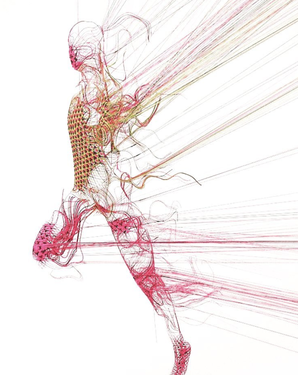
The purpose of your brain taking in this mass amount of unconscious sensory info is to be able to output the proper motor control to function in our surrounding environment; so we can balance and stand upright on uneven ground.
Every time any of your joints move you are relaying information your brain. Without joint movement, or with improper joint movement, your brain is receiving a false message. A chronic decreased range of motion associated with subluxation results in adaptive neuroplastic changes resulting in increased pain (nociception) and decreased proprioceptive input into the brain. In general, neuroplasticity refers to an adaptation of the nervous system in response to changes in the internal and external environment. Ultimately this means your nervous system changes and adapts to the information it receives, therefore leading to changes in what your body puts out.
Say for example your pelvis is not moving through full range of motion. Your brain is receiving a signal that the ground is at a different distance than it truly is. This is one reason why you may stumble or trip over something that is not there. Your brain thinks the ground is there, but in reality it is not.
Joints need to go through full ranges of motion, against resistance, every day to stay healthy and continue proper communication with the brain. Type 1 mechanoreceptors are only active while at extreme ranges of motion and when healthy joints are in both a static position and in motion. This is important because these receptors only fire at extreme or end ranges of motion, therefore FULL range is essential. It is also important to note that input is received while in motion and while at rest because it goes to show that information to the brain is a basic nutrient needed for proper control and function.
This defines the essential nature of continuing proper joint movement while conscious feeling pain and while NOT feeling any pain. Continue to feed your brain and nervous system with proper full range of motion of all joints, especially spinal joints, with chiropractic care. Specific adjustments through chiropractic care restores full motion within joints and continuing to move every day is what helps maintain it. This evidence gives us the understanding of how important joint movement is to not only feel better, but to function better overall.
References:
- Lesk, M. Info capacity one in a million; information vs attention. Intl Jol Comm. 2012;6:13.
- Seaman, DR. Joint complex dysfunction, a novel term to replace subluxation/subluxation complex; etiological and treatment considerations. JMPT. 1997;20(9).
- McLain. Mechanoreceptor endings in human facet joints. Spine. 1994;19(5).
- Wyke, B. Neurology of cervical spinal joints. Physiotherapy. 1979;65:72-6.

 RSS Feed
RSS Feed
